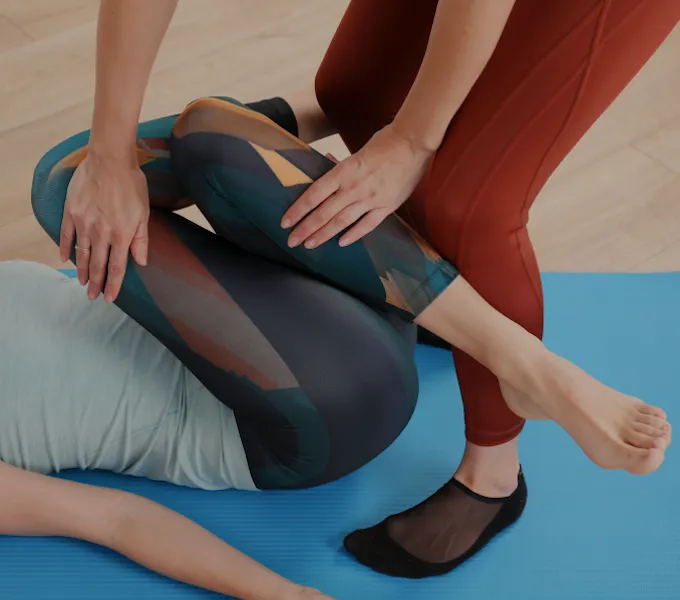
Is Your Bladder Normal? Here's How to Tell
We’ve all been there: sitting in a quiet bathroom stall, next to a stranger — or worse, a co-worker who you have to look in the eye later — and suddenly you are VERY aware of how long it's taking you to pee, or how it sounds when you do. Is it too loud? Too drippy? Are you straining to get out the last drop?
At Origin, we want everyone to know what normal bladder function is and isn't, so you can stay on top of your urinary health and get medical help if you need it. Keep reading to find out the signs of a happy, healthy bladder.
8 Signs of a Healthy Bladder
Bladder dysfunction describes a wide range of conditions that affect the way your bladder is able to effectively hold and empty urine. One example is urinary incontinence, aka the involuntary loss of urine, and affects more than 200 million people worldwide. The reality is, bladder dysfunction is common and things like pregnancy, childbirth, and menopause may make them even more common. If you’ve never thought to check in on your bladder before, this is what you should expect:
- During the day, you don't have the urge to pee more than once every 2 hours.
- During the day, you don’t hold your urine for more than 5 hours at a time.
- When it’s time to go, you can calmly and easily make it to the bathroom.
- At night, you get up to use the bathroom 1x, at the most.
- It's easy for you to start peeing — you don't have to push or strain — and the stream is mostly continuous (doesn't stop and start).
- Your bladder may not empty completely — this is normal — but you shouldn’t have an urge to go again right away.
- Urinating is always pain-free and without urgency — even if you hear the sound of running water, or are putting the key in the door when you arrive home!
- You don’t leak urine, not even a little.
Also, all of the above should hold true when you’re fully hydrated, meaning you're drinking about ½ of your body weight in water each day, and maintaining pale yellow to clear urine.
Tips for Bladder Success
The good news is, if you are experiencing any symptoms of bladder dysfunction the pelvic physical therapy is often a highly effective treatment option. In fact, it is recommended as a first line if your bladder symptoms are resulting from pelvic floor muscle dysfunction. But even if things check out, your bladder can still act up from time to time, so here are a few tips to get things back on track.
1. Stay hydrated.
It may seem like drinking more water will make things harder on your bladder, but when you’re dehydrated, urine is more likely to irritate your bladder, and may lead to symptoms coming up. For example, drinking less liquid may trigger the bladder to be sensitive to less urine than before, training you to go sooner than you really need to.
2. Limit bladder irritants.
Acidic or spicy foods and caffeinated or carbonated beverages are common bladder irritants. If these make up a large part of your diet, they may start to irritate your bladder and cause leakage or urgency. Being mindful of these foods can help support your overall bladder health. Common bladder irritants include:
- Caffeinated beverages (coffee, tea, energy drinks)
- Carbonated beverages (soda, seltzer)
- Alcoholic beverages
- Tomatoes and citrus fruits
- Sugar and artificial sweeteners
- Spicy foods
- Chocolate
3. Don’t go “just in case.”
Urinating when you don’t actually need to go, for example before you leave the house in the morning or before a meeting or other event, may contribute to developing some bad bladder habits. Over time, these habits can contribute to bladder dysfunction.
4. Sit on the toilet when peeing.
Hovering over the toilet seat can make it hard to fully relax your pelvic floor muscles when you’re pee, which can make it difficult to start your urinary flow, and even cause you to strain to fully empty.




